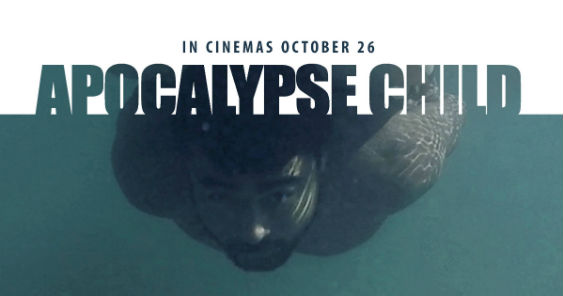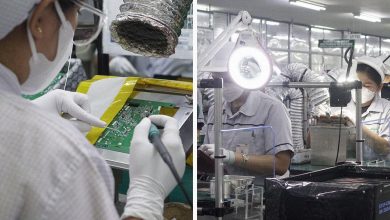Introduction and interview by Anna Gamboa
This year’s must-see film, “Apocalypse Child” will finally have its commercial run in cinemas starting October 26. After premiering sometime in the third quarter of 2015 as part of the QCinema film fest, it made the rounds of local art houses and international festivals, quietly garnering awards and acclaim.
Telling the story of Ford and his friends, set in one of the surfing capitals of the country–Baler, Quezon–the film takes viewers on a journey as old wounds reopen, new ones are made–and only personal epiphanies and forgiveness can heal. The message in the end may as well be that moving on takes many forms: such as physically going away, forgiving a close friend, or even letting go of the past.
In between working for Filmex and promoting the film, director Mario Cornejo gamely answered questions sent by adobo magazine about this labor of love, undertaken with co-producer/wife Monster Jimenez.
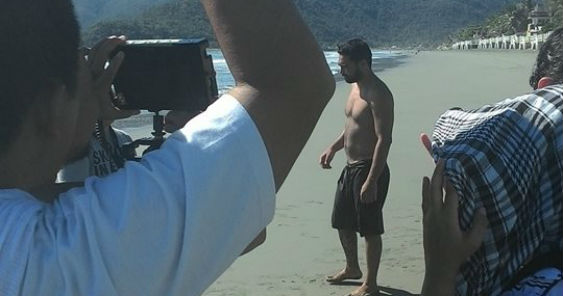
1. How did the film evolve as a love letter to Baler, Quezon?
First off, Baler is magical. It’s an easy place to fall in love with. Actually, APOCALYPSE CHILD started as a completely different movie with a different title, about four middle-aged women who learn to surf because they all fall in love with a young surf instructor. I started writing that film first with my partner and producer, Monster Jimenez.
I still like that movie idea. But when we went to Baler to research it, we heard this fantastic story about how surfing started in the Philippines.
Legend goes that there was no real surf culture in the Philippines until the film APOCALYPSE NOW. That classic Hollywood film shot their surfing scenes in Baler in the late 70s. When the production wrapped, they left a surfboard behind, floating in the ocean. Five local boys got a hold of that board and taught themselves how to surf, eventually becoming the first Philippine surfing champions and establishing surfing in the country.
Like all great legends, this is only somewhat true.
So we started thinking. What if instead of just a surfboard, the production left behind some children as well? And what if one of those children, named Ford, was told his whole life that he was the son of the director, Francis Ford Coppola?
I started to think about the way people are essentially stories. We tell ourselves who we are everyday, the favorite daughter, the sacrificing mother… We’re our worst fault. We’re our father’s son.
I became obsessed with how we construct these myths in our minds, even when they hold us back. we become so invested in our stories that sometimes it’s hard to grow.
So I came up with these characters, all stuck in their stories, holding themselves and each other back until something had to give. Baler gave me the theme of this film in our very first visit there, and I started to look at myths.
2. The cast works so well together, so who signed on first and was it easy to get everyone else on board because of the script?
We wrote the script with one name in mind to play the lead, Ford. It kind of had to be Sid Lucero. We had no Plan B. He’s one of the best actors we have. He looks like he could conceivably be the son of Coppola. He has a surfer look to him. He has a legendary father, larger than life father whose shadow is almost impossible to escape.
If Sid said no, I think we would have had to do a nationwide casting hunt. To this day, I can’t think of anyone else.
Fortunately, he said yes. And it was fairly easy to get the rest of the cast to sign on as well. I can’t say it’s the writing, though I do believe the actors grew to really appreciate the script and themes later on. I think the thought of shooting a few weeks of surfing in Baler was a bigger draw than the story to tell you the truth.
I’m glad you think the cast work well together. I’m very proud of that because we worked really hard to establish an atmosphere where our actors could own their characters. On the set, they looked out for each other and when the production had a four day break, they stayed in Baler and just surfed and hung out while the rest of the production went home for a break and to see their families.
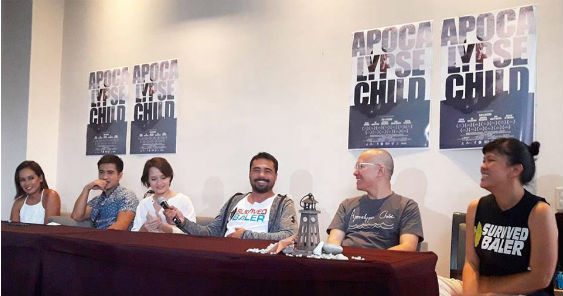
3. At the premiere sponsored by your company last year, you expressed your gratitude for their support for this passion project — how much time did you need for this project and in what other ways did Filmex extend their assistance?
Filmex has always been really supportive of their directors’ creative growth. Just in the last six years I think the directors of Filmex have done six feature-length films. I did a documentary and this movie, Raymond Red did three movies and Paolo Villaluna just finished one. Then there have been short films and other things. Paolo even has his documentary series, STORYLINE. They seem to recognize the importance of flexing different muscles, making us into better artists overall.
The main thing I needed from Filmex was time off. I didn’t really need much from them in terms of equipment, though they were more than happy to lend us some if we needed it. In the end I finished all my shoot days for the film in just 20 days, so they made the extra effort of scheduling around that time I needed for shooting and post.
4. The film has the need to belong as part of its theme, counterpointed by the need to get away. In the end one of the characters does leave–at a price, but then everyone also has to pay their price (in terms of implied consequences) as well for certain actions. You might say it’s a “delayed coming of age” film, right–especially in the case of Ford (Sid Lucero) and Fiona (Annicka Dolonius)?
It is very much a coming of age film of a man who is just starting to be on the other side of youth. Sid Lucero’s surf instructor character is in his thirties, still living with his mother, his childhood toys still strewn around his room.
He’s been stuck where he was, stuck in his story until he meets this young girl, Fiona, played by Annicka Dolonius. Fiona is still a teenager. We wrote her as the embodiment of youth, constantly willing to change the story of her life when she needs to. She wakes him up, in a way. She makes him want to change, to grow. But when he’s confronted with his past in the person of his best friend from childhood, he finds he can’t move until he faces what he’s done.
5. There are moments (especially the betrayals) that ring true or hit home–were they based on real-life events for you or someone you know? Were there mind-opening moments for your actors as they experienced/explored (or workshopped) through the film?
There are some things that are very much based on myself, and there are some things that are based on people who are very close to me. And our workshops with our actors made us change some of the characters, because their lives provided so much more depth than I was able to write. I can’t really say too much more. But this film is definitely a tapestry. Making it was therapy for me, and I don’t think I was alone in that.
6. The story’s structure is interesting: while there’s a focal character, he isn’t its center, and everyone has a different function to propel the film along. Was this intentional or did it just come out that way through the writing/editing?
That structure was very much intentional. It’s a surfing film, after all. Did you know that water doesn’t really move that much when waves travel? It’s really the energy underneath causing all the motion. That was the idea behind the storytelling, which we tried to show through the acting, editing, sound design, etc…
It’s an unusual film. But Philippine cinema is an exciting place, and slowly the audience for unusual films is growing.
7. Which character (Ford, Fiona, Jordan, Rich, Chona, Serena) were you most invested in?
I love them all deeply. But I feel the most deeply for Rich. Ford came from the part of me that I’m most frustrated with. But Rich, the best friend of Ford, is by every measure a success. He’s a lawyer, a congressman, owns most of Baler, with a gorgeous fiancee. But happiness eludes him. Even today, when I imagine him, I’m not sure how he’s doing. I hope he’s ok.
8. How long did the film take to write/finance/shoot/edit?
Writing this film took forever, since we first tried that other story with the surfing matronas. Financing was quick, though. Once we finished the script, we submitted it to the QCinema FIlm Festival and got partial funding. After that, we were lucky enough to meet some amazing and generous art patrons who were always interested in producing a film. So from the time we submitted the script to the time it premiered took just seven months or so.
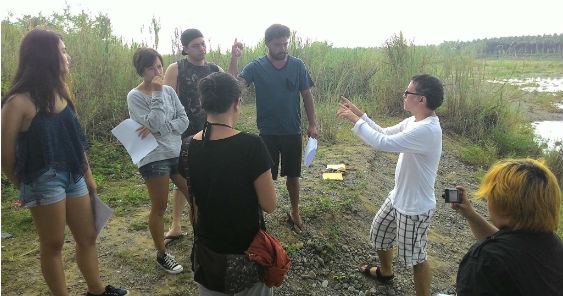
9. Where has the film screened so far, and what was the best audience reaction you received after a screening?
We’ve screened in festivals in Italy, New York, Korea, Pittsburgh, and we have upcoming festivals in Hawaii, Toronto, Poland, Germany, and Laos.
We’ve had an amazing reception to the film, with over 30 nominations and wins by different award giving bodies, and rave reviews from top critics.
But my favorite reception was the premiere, when my cast and crew watched the film for the first time. They poured their heart and soul into the film, and the actors put so much of themselves into their characters. And let’s be honest, when you work in movies, you can really do your best and still come out with an awful film. So seeing everyone’s faces afterwards, so proud of their work, so happy that their contributions to the movie were so clearly seen, that was magic.
Now that our initial festival run is done, we’re now ready for our nationwide commercial release this October 26. A lot of the best independent cinema in the Philippines doesn’t get a chance to release this wide. And we may be fools for trying when other films, some great films, have failed when they tried to open nationwide. But I think there is an audience for this kind of film. And we have to try to get it in front of them. We’ve had such good audiences abroad, and I refuse to believe that those audiences only exist outside the Philippines. Maybe we have to try to get people who wouldn’t normally watch a Philippine film to come and see this one. I’m not sure if we can do it, but we have to try.
10. What’s next for you? (Is there another script/production in the works?)
I’m writing a film about cheating on a relationship and sleepwalking. We’ve also been developing a concept for the longest time about a housemaid who recruits a gang of household staff to take down a jueteng lord. It’s called Osang’s Eleven. It’s like Downton Abbey if Mrs. Hughes was trying to kill Lord Grantham.

